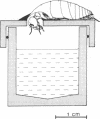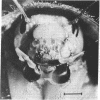Abstract
The desert cockroach, Arenivaga investigata, can gain weight by absorption of water-vapor from unsaturated atmospheres above 82.5% relative humidity. Blocking the anus or the dorsal surface with wax does not prevent water vapor uptake, but interference with movements of the mouthparts or blocking the mouth with wax-prevents such uptake. Weight gains are associated with the protrusion from the mouth of two bladder-like extensions of the hypopharynx. During absorption these structures are warmer than the surrounding mouthparts, their surface temperature increasing with relative humidity. This suggests that the surfaces of the bladder-like structures function at least as sites for condensation of water vapor, but the precise location of its transfer into the hemolymph has not yet been identified.
Full text
PDF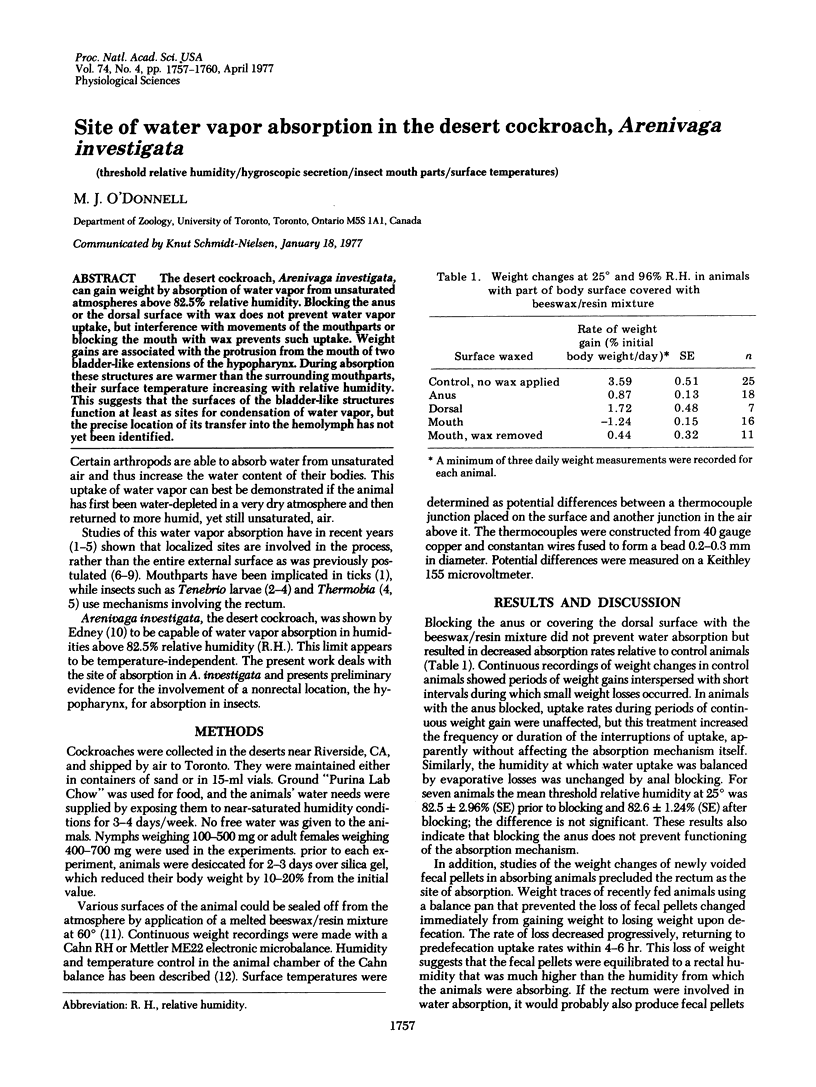

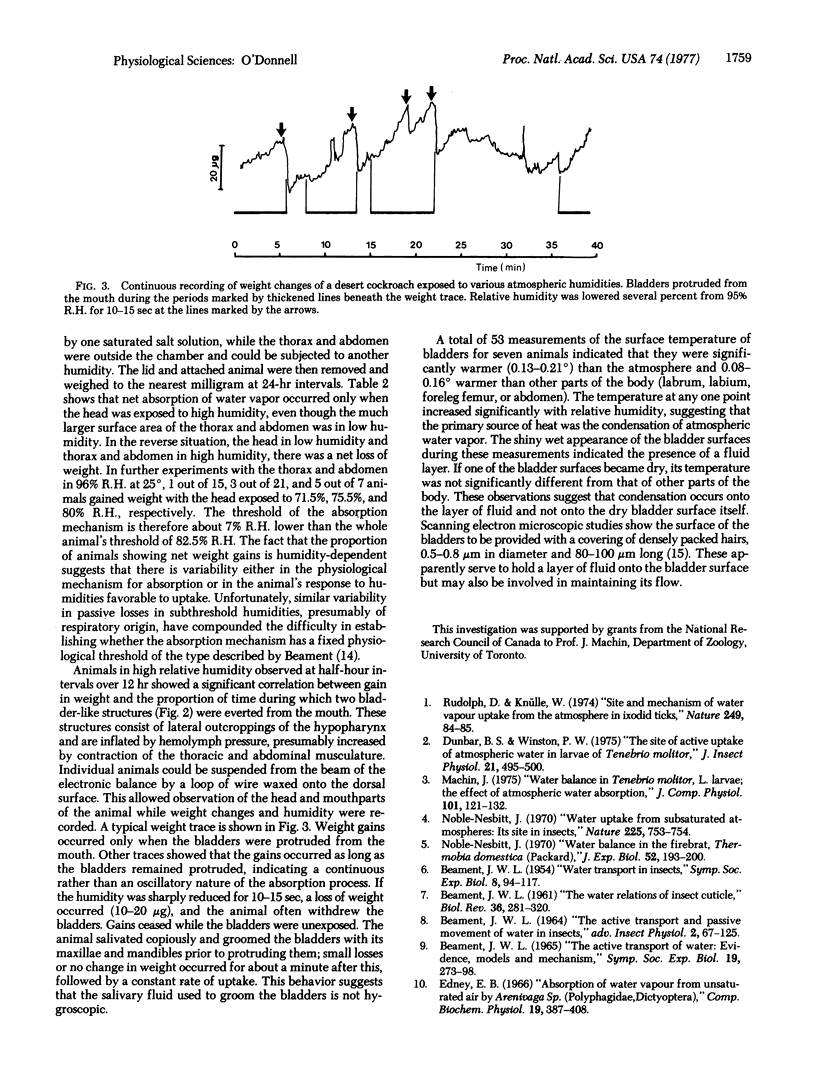
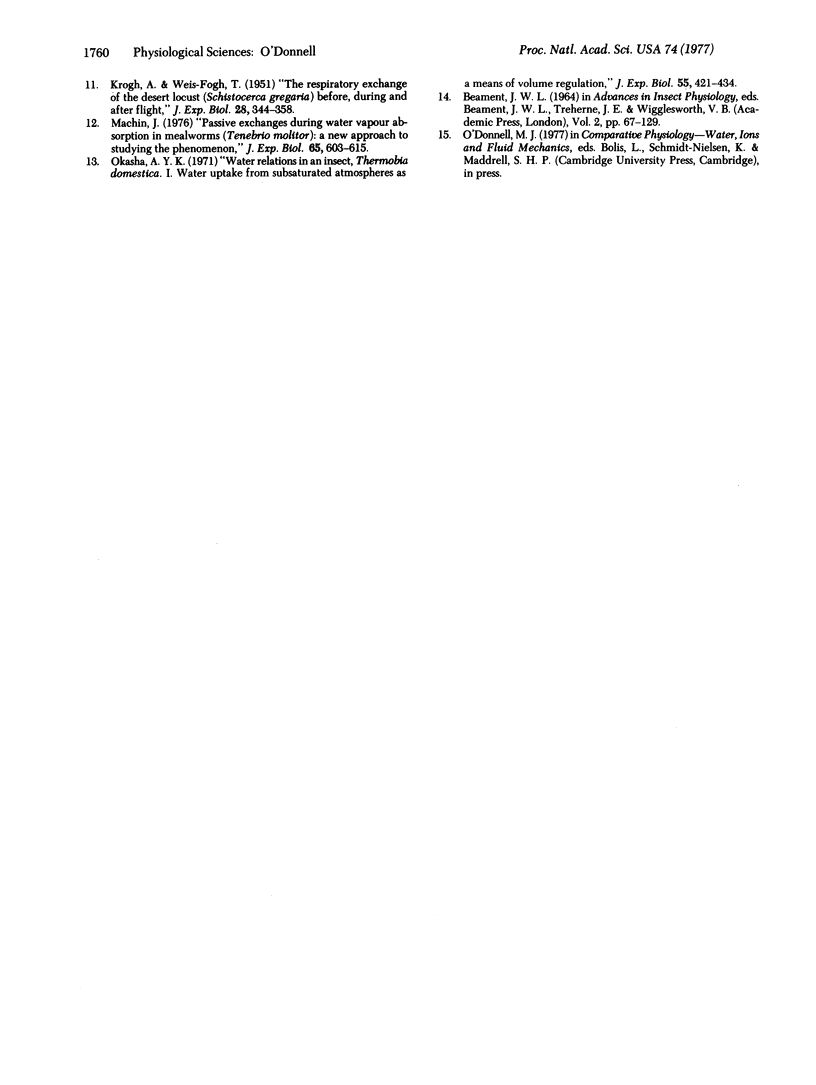
Images in this article
Selected References
These references are in PubMed. This may not be the complete list of references from this article.
- BEAMENT J. W. The water relations of insect cuticle. Biol Rev Camb Philos Soc. 1961 Aug;36:281–320. doi: 10.1111/j.1469-185x.1961.tb01291.x. [DOI] [PubMed] [Google Scholar]
- Beament J. W. The active transport of water: evidence, models and mechanisms. Symp Soc Exp Biol. 1965;19:273–298. [PubMed] [Google Scholar]
- Machin J. Passive exchanges during water vapour absorption in mealworms (Tenebrio molitor): a new approach to studying the phenomenon. J Exp Biol. 1976 Dec;65(3):603–615. doi: 10.1242/jeb.65.3.603. [DOI] [PubMed] [Google Scholar]
- Noble-Nesbitt J. Water uptake from subsaturated atmospheres: its site in insects. Nature. 1970 Feb 21;225(5234):753–754. doi: 10.1038/225753a0. [DOI] [PubMed] [Google Scholar]
- Rudolph D., Knülle W. Site and mechanism of water vapour uptake from the atmosphere in ixodid ticks. Nature. 1974 May 3;249(452):84–85. doi: 10.1038/249084a0. [DOI] [PubMed] [Google Scholar]



